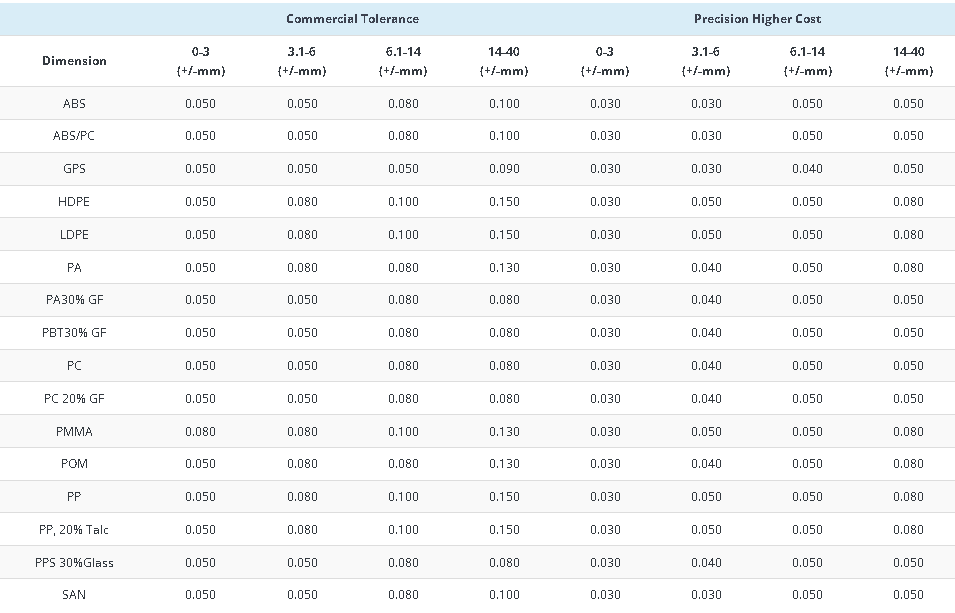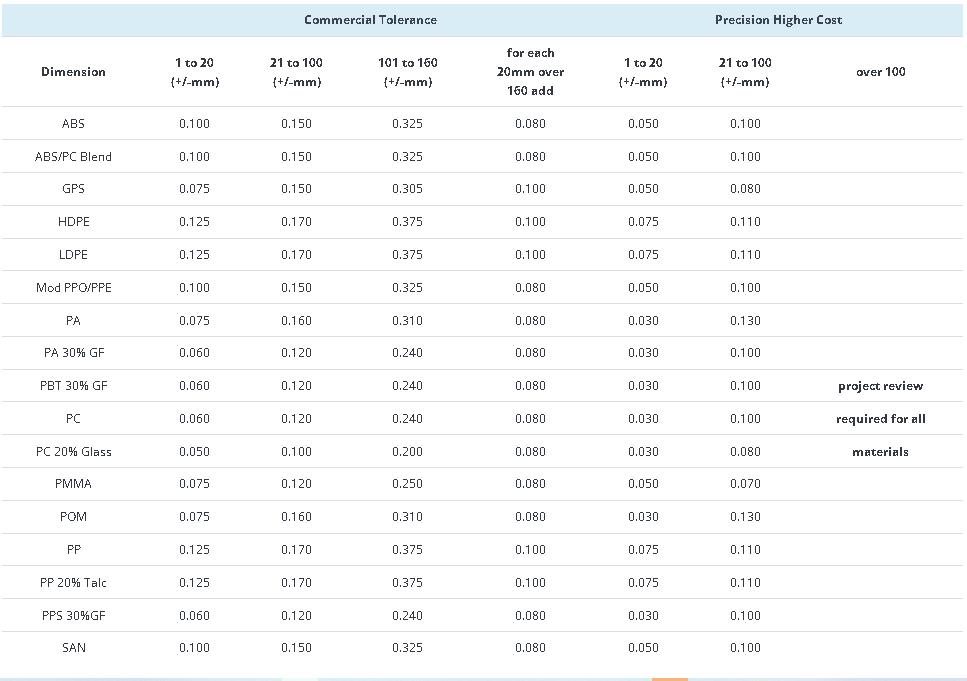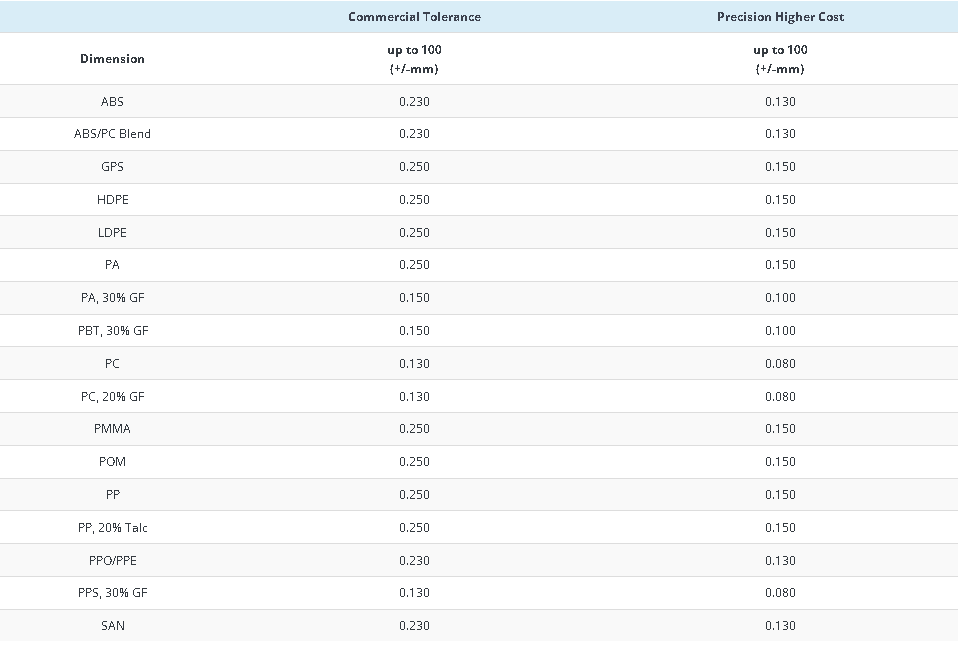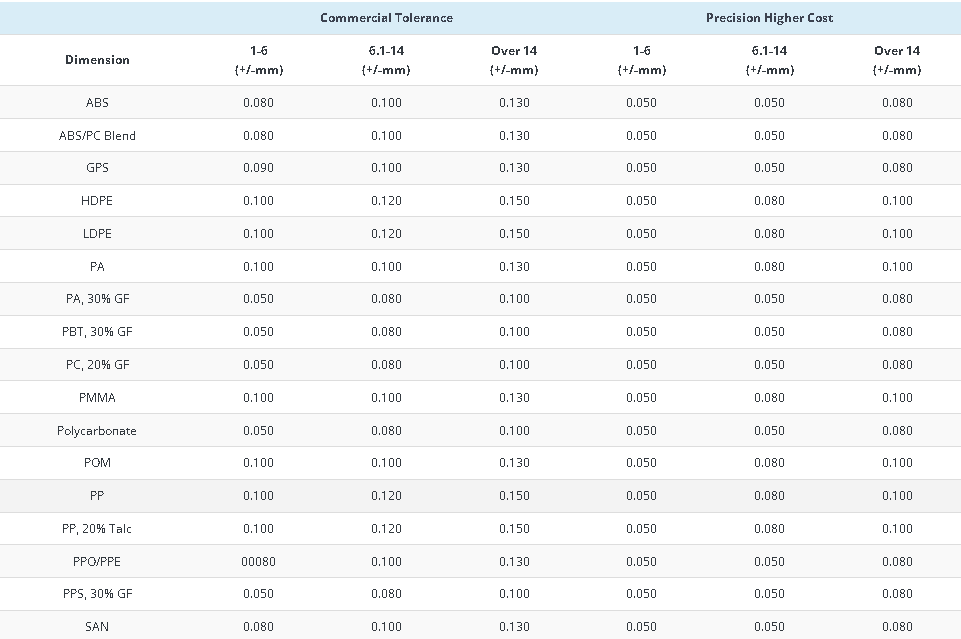
Injection molding is a highly precise manufacturing process, but every process has its limits. In injection molding, tolerances determine how closely a finished part matches its intended dimensions.
Whether you're making gears, casings, or medical housings, understanding and managing injection molding tolerances is essential to avoid part rejection and assembly issues.
This guide covers what tolerances are, what affects them, and how to design for the tightest tolerances possible.
What Are Injection Molding Tolerances?
Tolerances define the allowable deviation from a nominal (target) dimension.

Injection molding tolerances1 refer to the acceptable range of dimensional variation in molded plastic parts. No mold is perfect, and various factors during molding—like temperature, shrinkage, and pressure—introduce minor dimensional changes.
For example:
- A hole with a nominal diameter of 10.00 mm might be acceptable within a tolerance of ±0.10 mm, meaning actual diameters between 9.90 mm and 10.10 mm are permitted.
Tolerances are particularly important for:
- Interlocking parts that need precise fits
- Moving mechanisms like hinges or sliders
- Parts with tight sealing requirements
Factors That Affect Tolerances in Molding
Achieving tight tolerances is not just about accurate molds. Many dynamic factors influence the final dimensions of an injection molded part.

Dive Deeper: What Influences Dimensional Variability?
Here are the most common factors:
1. Material Shrinkage2
Each plastic resin has a specific shrinkage rate—typically between 0.2% and 2%. When the molten plastic cools, it contracts. Failing to account for this shrinkage can lead to undersized or warped parts.
| Material | Typical Shrinkage (%) |
|---|---|
| ABS | 0.5 – 0.7 |
| Nylon (PA) | 1.0 – 2.0 |
| Polypropylene | 1.5 – 2.5 |
| Polycarbonate | 0.5 – 0.7 |
2. Mold Design and Precision3
Tolerances are only as good as the mold. Any misalignment or wear in the mold can lead to poor repeatability and off-spec parts. Key considerations:
- Proper alignment of parting lines
- High-precision machining of the mold cavity
- Venting and gating positions that minimize warping
3. Machine Settings
Pressure, temperature, injection speed, and cooling time affect how the plastic flows and cools. Even small fluctuations in machine settings can affect tolerances.
4. Part Geometry
Thick sections cool slower and shrink more. Sharp corners may warp. Long, thin parts may bow or flex during ejection.
5. Tool Wear Over Time
Even with good maintenance, tooling wears out. After thousands of cycles, edges soften, ejector pins loosen, and tolerances drift.
Typical Tolerance Ranges by Material and Part Size
Not all materials or part sizes can achieve the same tight tolerances.

Dive Deeper: General Guidelines by Category
While actual tolerances depend on part complexity and mold quality, here are general expectations:
By Material Type
| Material | Achievable Tolerance (mm) |
|---|---|
| ABS | ±0.10 |
| PC (Polycarbonate) | ±0.05–0.10 |
| Nylon (PA) | ±0.20 |
| POM (Delrin) | ±0.10–0.15 |
| PP (Polypropylene) | ±0.20–0.30 |
By Part Size
| Feature Size | Typical Tolerance (mm) |
|---|---|
| 0–25 mm | ±0.05–0.10 |
| 25–100 mm | ±0.10–0.25 |
| Over 100 mm | ±0.25–0.50 |
Smaller features tend to have tighter tolerances. As the overall part size increases, achieving tight tolerances becomes more difficult due to uneven cooling and warpage.
How to Design for Tight Tolerances
Designing with tight tolerances in mind helps reduce the risk of defects and saves time and money in production.

Dive Deeper: Tips for Engineers and Designers
-
Avoid Unnecessary Tight Tolerances
- Ask yourself: "Does this feature really need ±0.05 mm?"
- Tighter tolerances cost more. Only apply them to critical areas.
-
Maintain Uniform Wall Thickness
- Uniform cooling reduces warping and improves dimensional stability.
-
Add Draft Angles
- Proper draft (usually 1°–2°) eases part ejection and reduces deformation.
-
Avoid Sharp Internal Corners
- Use fillets to improve mold filling and minimize stress concentrations.
-
Include Datum Points
- Define reference points for accurate dimensional measurement during quality checks.
-
Use Ribs and Gussets Wisely
- These features add strength and help resist warping in large, flat parts.
-
Simulate the Process Beforehand
- Mold flow analysis (MFA)4 tools can predict shrinkage and help fine-tune part design.
Standards and Best Practices for Dimensional Accuracy
To ensure consistency and meet industry expectations, most manufacturers follow internationally recognized standards.
Dive Deeper: Understanding Dimensional Standards
1. DIN 16901
A German standard offering detailed tolerance guidelines for thermoplastics. It categorizes tolerances based on feature size and part geometry.
2. ISO 20457 (Replaces ISO 16742)
An international standard that defines tolerances for molded parts made from thermoplastics. It considers both material shrinkage and mold type.
3. SPI (Society of the Plastics Industry) Guidelines
In North America, SPI provides tolerance standards based on mold type (A, B, C, D class molds) and production volume.
| SPI Mold Class | Tolerance Grade | Mold Life Expectancy |
|---|---|---|
| Class 101 | Very tight (±0.025 mm) | 1 million+ cycles |
| Class 102 | Tight (±0.05 mm) | 500,000–1 million |
| Class 103 | Standard (±0.10 mm) | Up to 500,000 |
| Class 104/105 | Loose (±0.25 mm or more) | Prototypes or short runs |
Conclusion
Injection molding tolerances are a key aspect of successful plastic part manufacturing. They influence part fit, function, and quality.
By understanding the factors that affect tolerances—from materials to machine settings—and following best design and manufacturing practices, engineers can consistently produce precise and reliable parts.
-
Understanding injection molding tolerances is crucial for ensuring the quality and functionality of molded parts. Explore this link for in-depth insights. ↩
-
Material shrinkage significantly impacts the final dimensions of molded parts. Learn more about its effects and how to manage them. ↩
-
Mold design and precision are critical for achieving tight tolerances. Discover best practices and techniques to enhance mold quality. ↩
-
Exploring mold flow analysis can provide insights into optimizing designs and preventing defects in production. ↩

